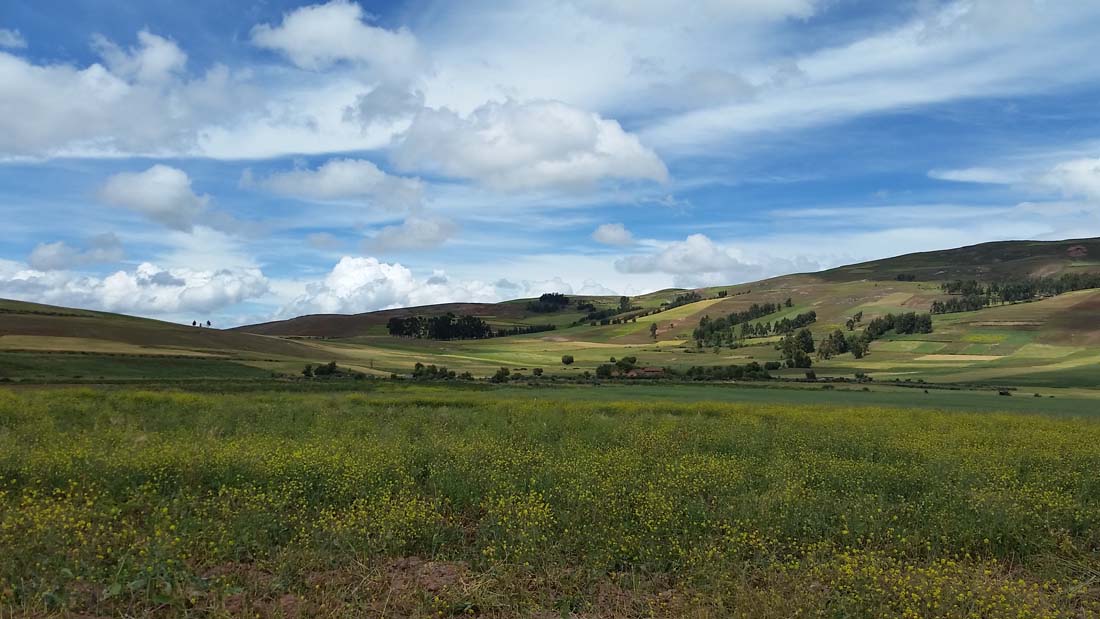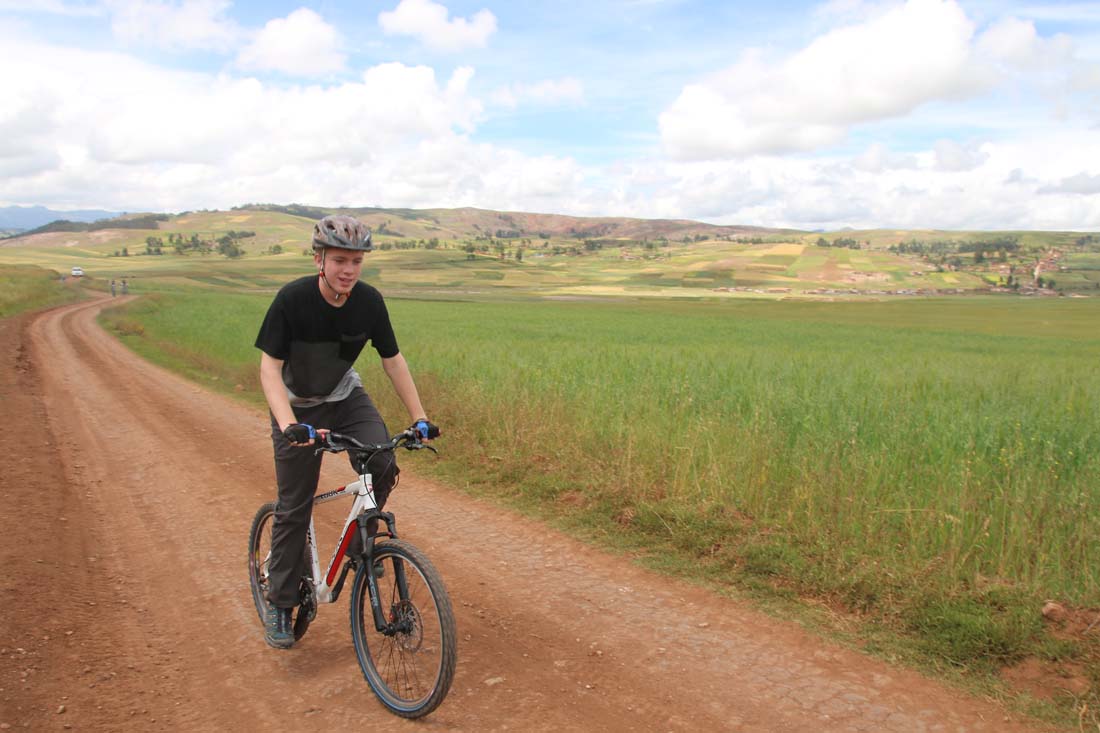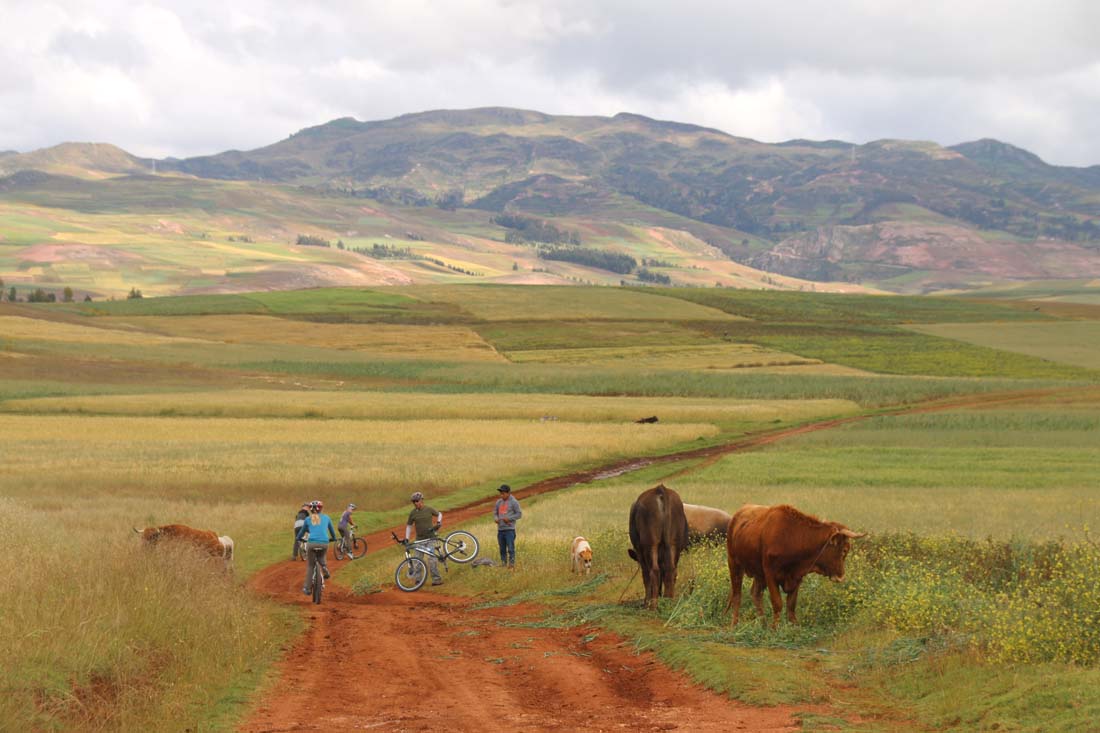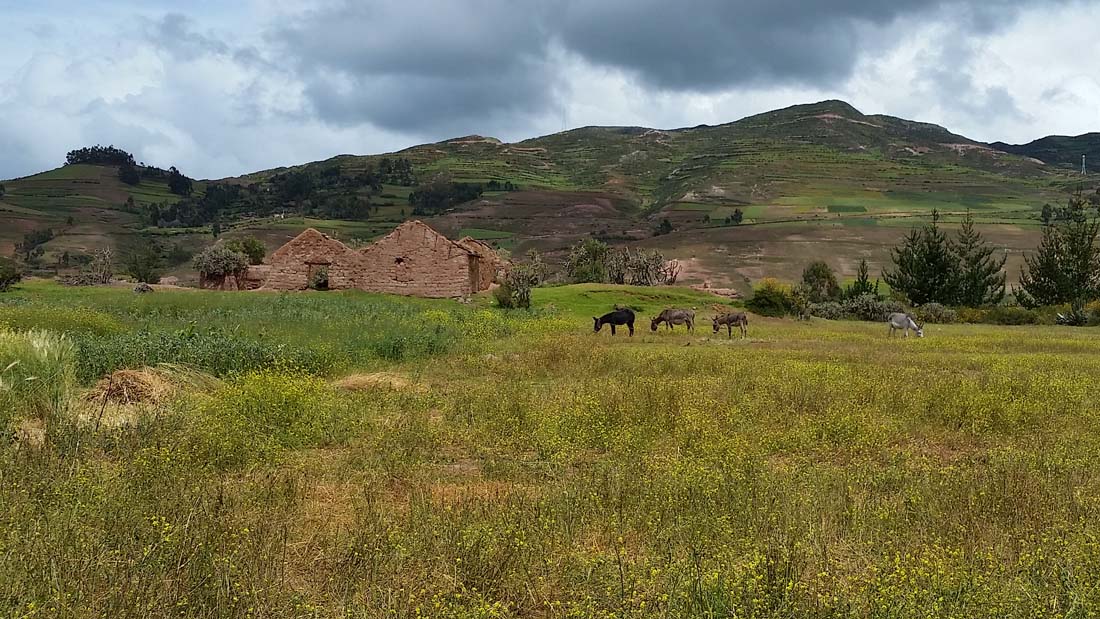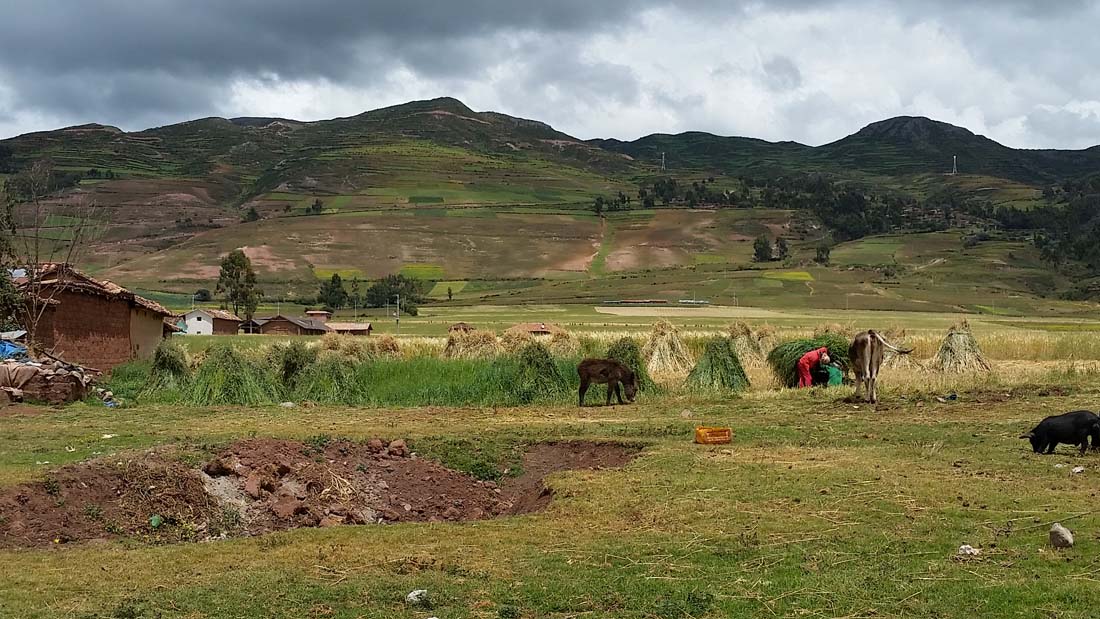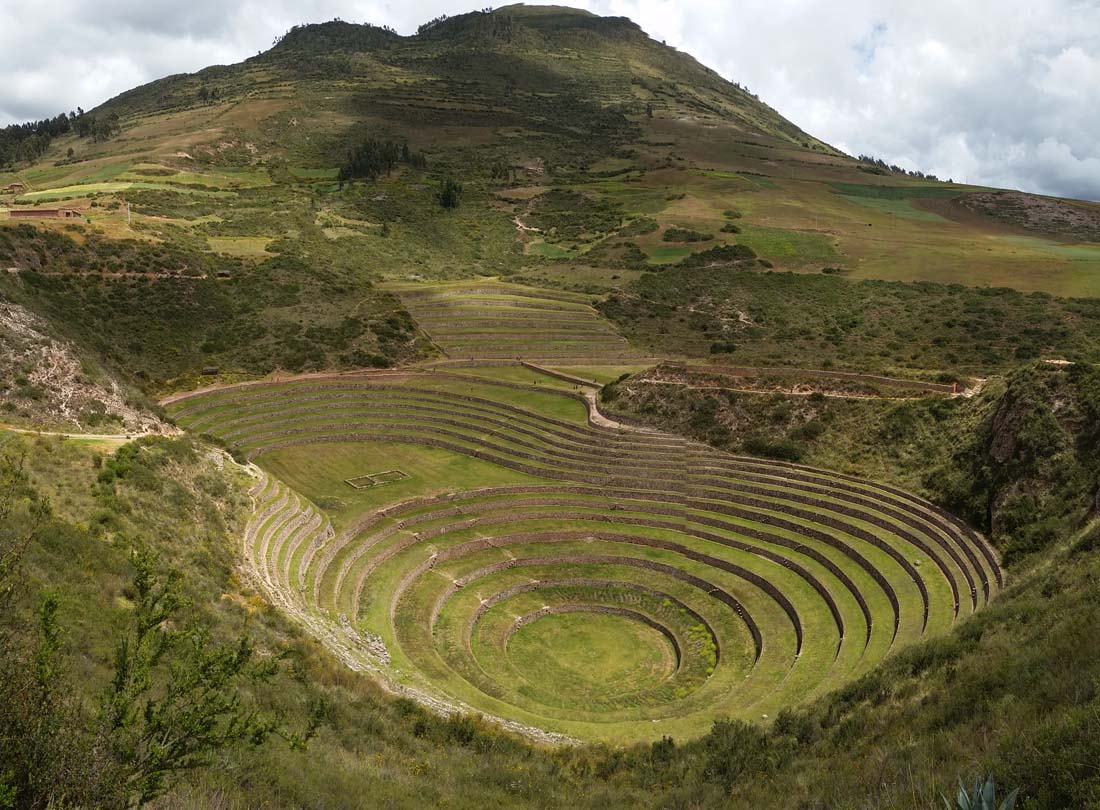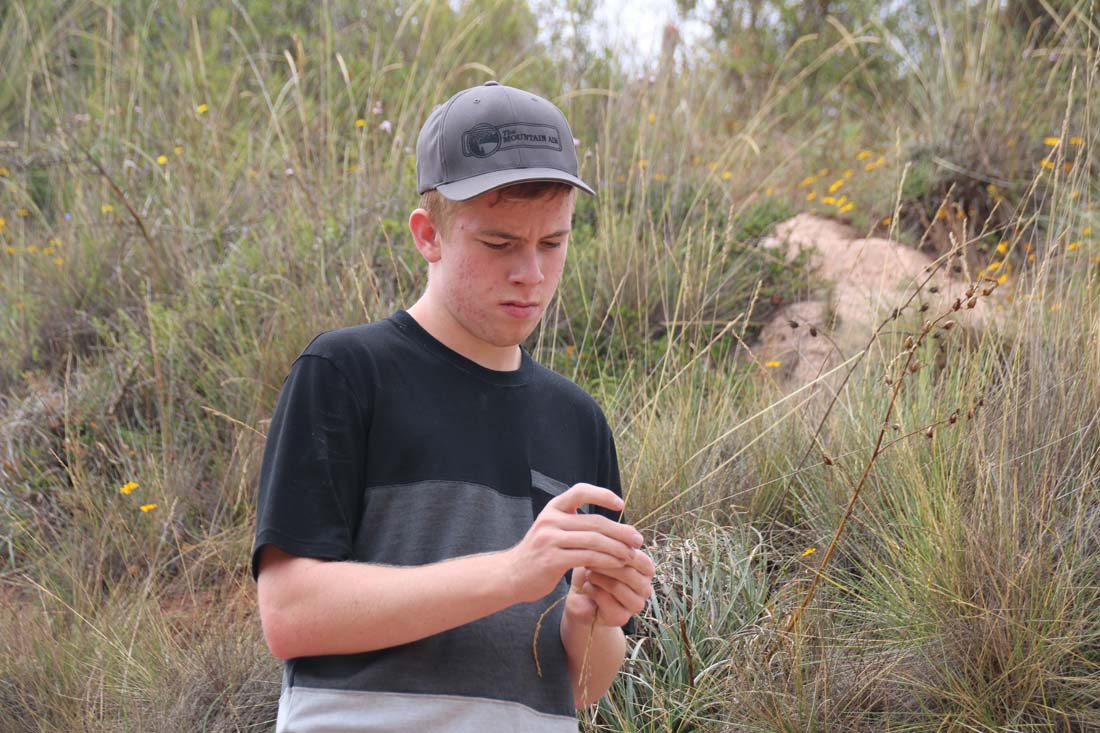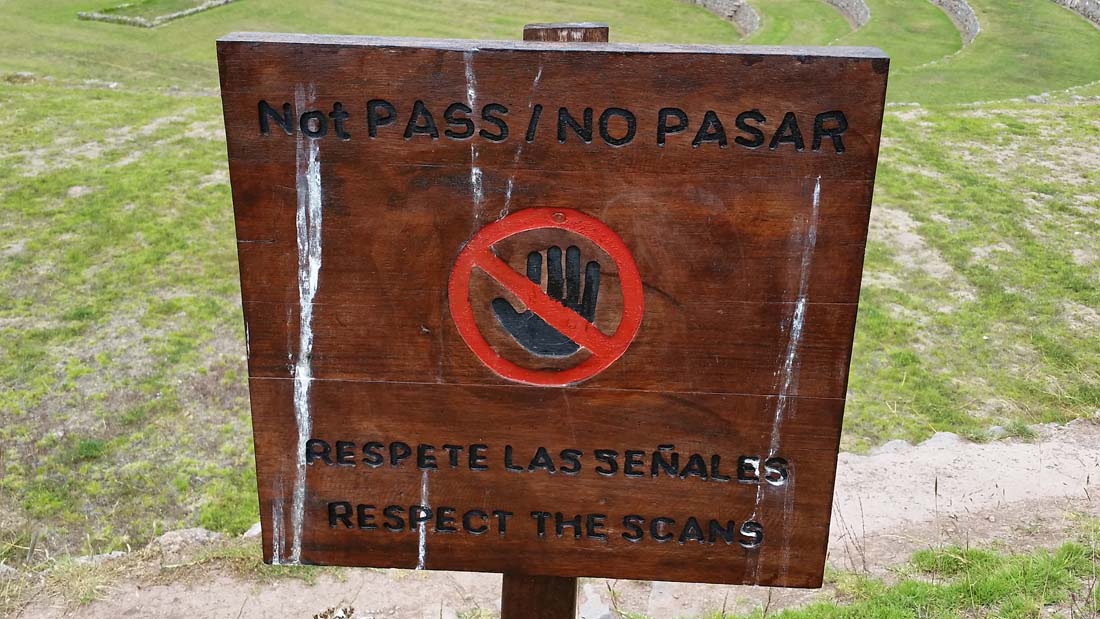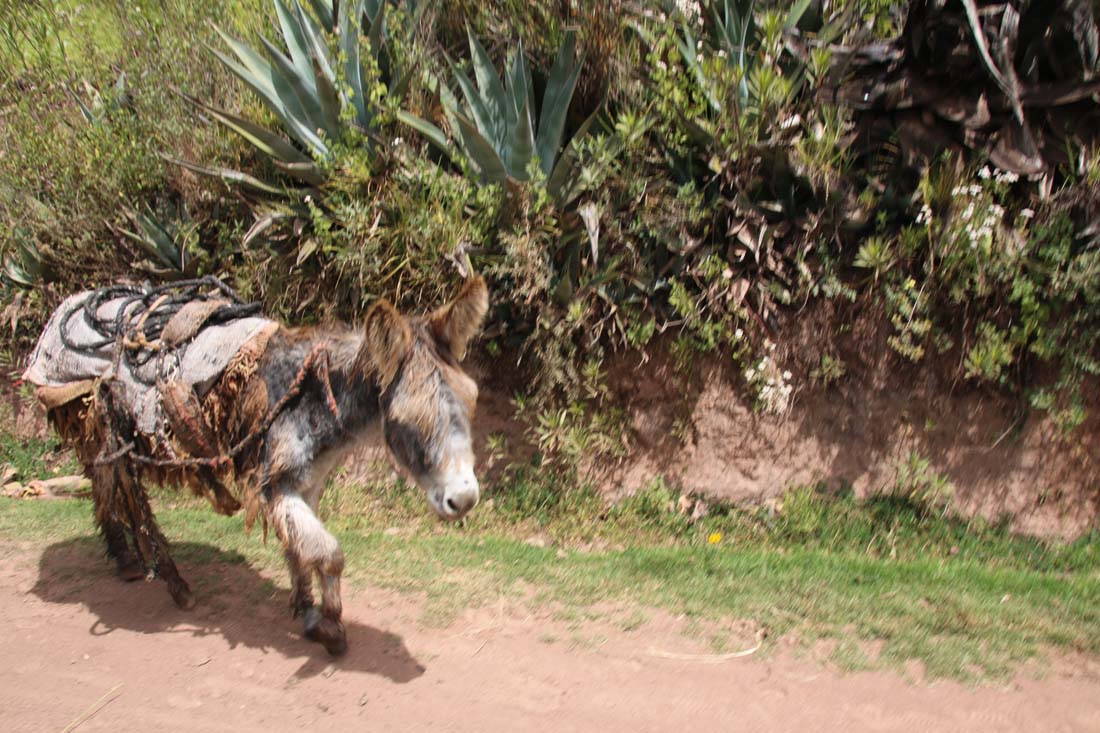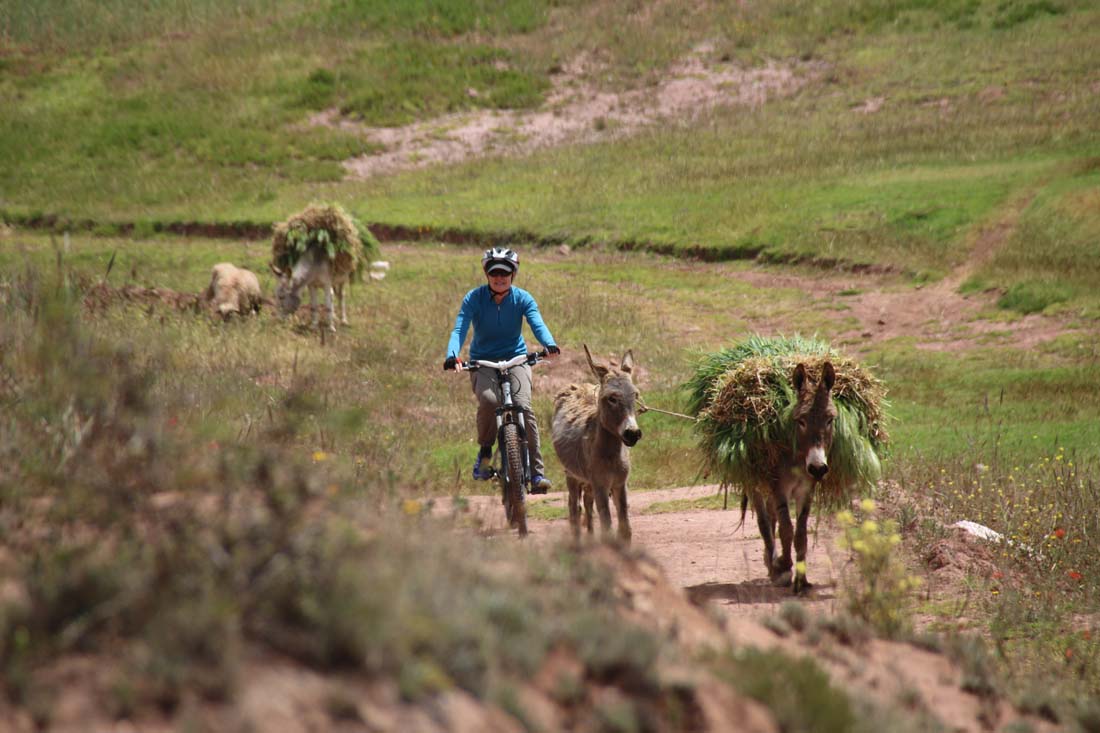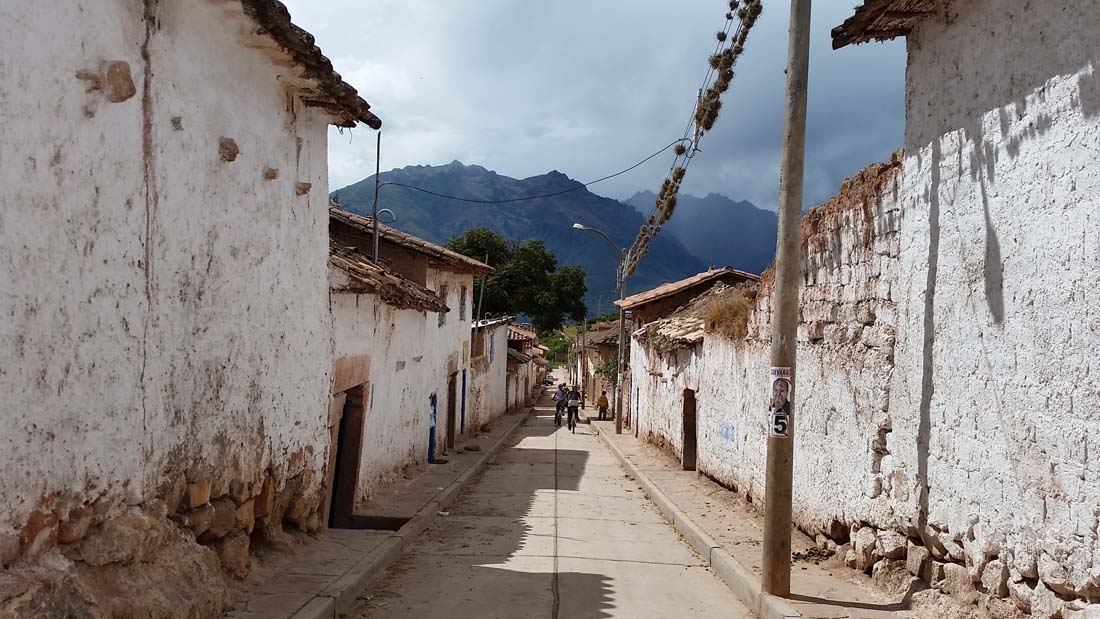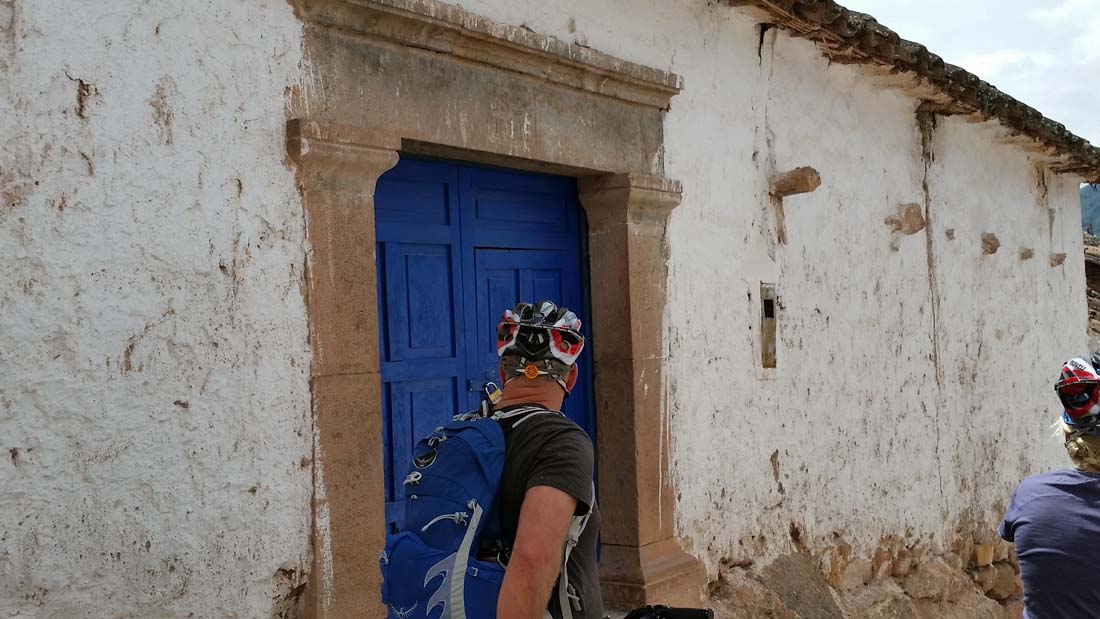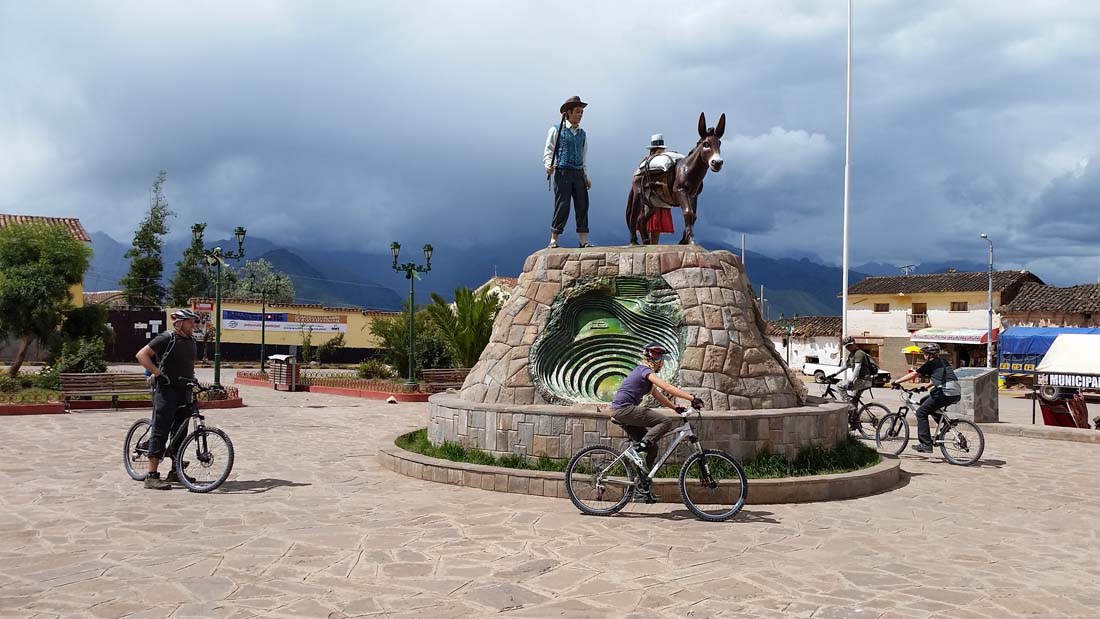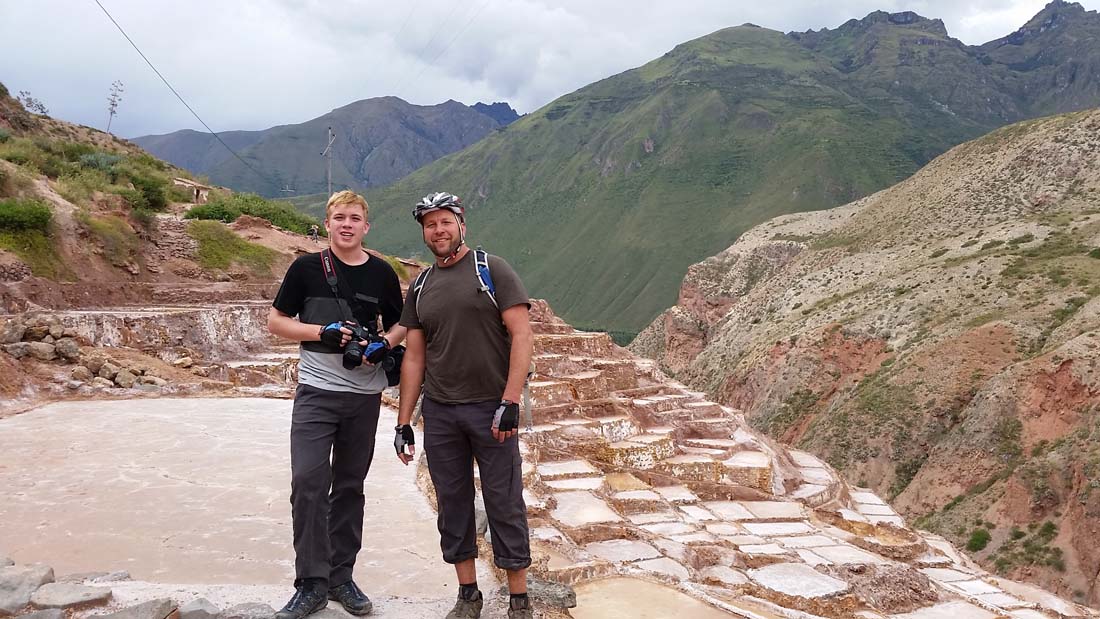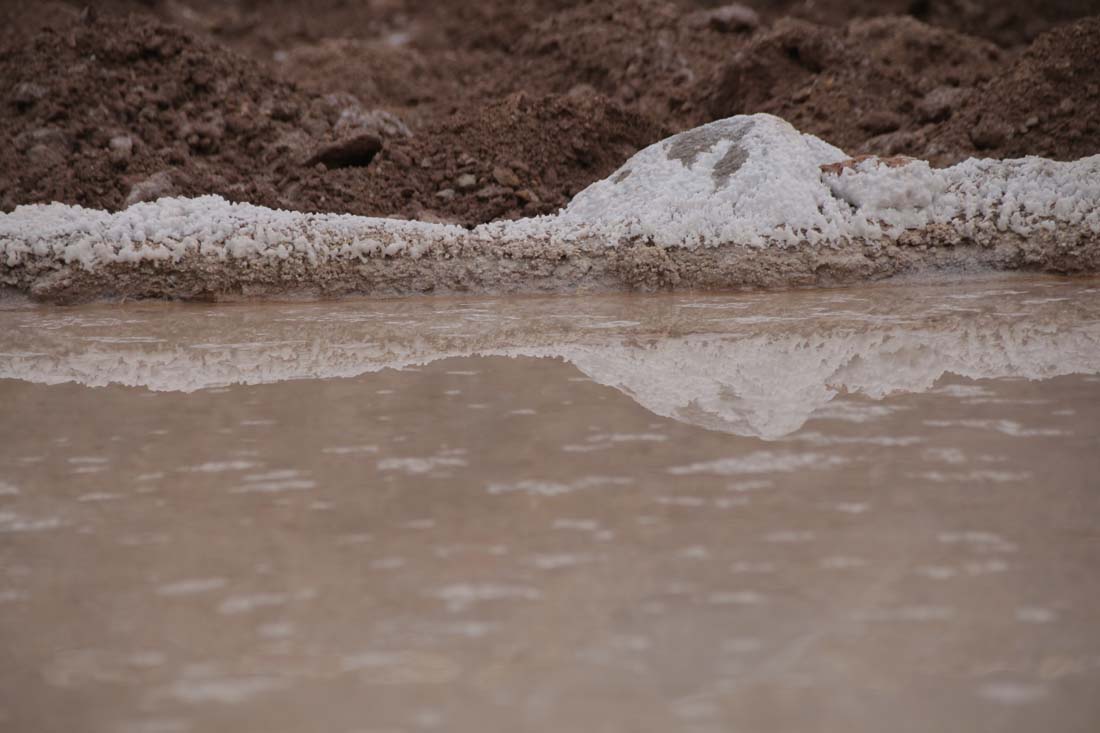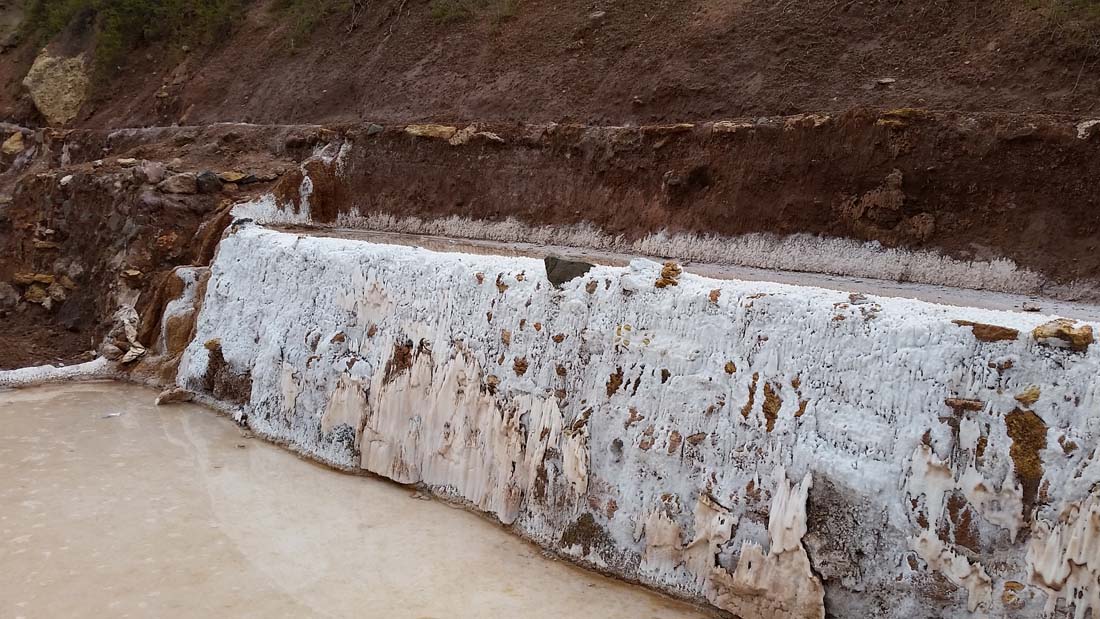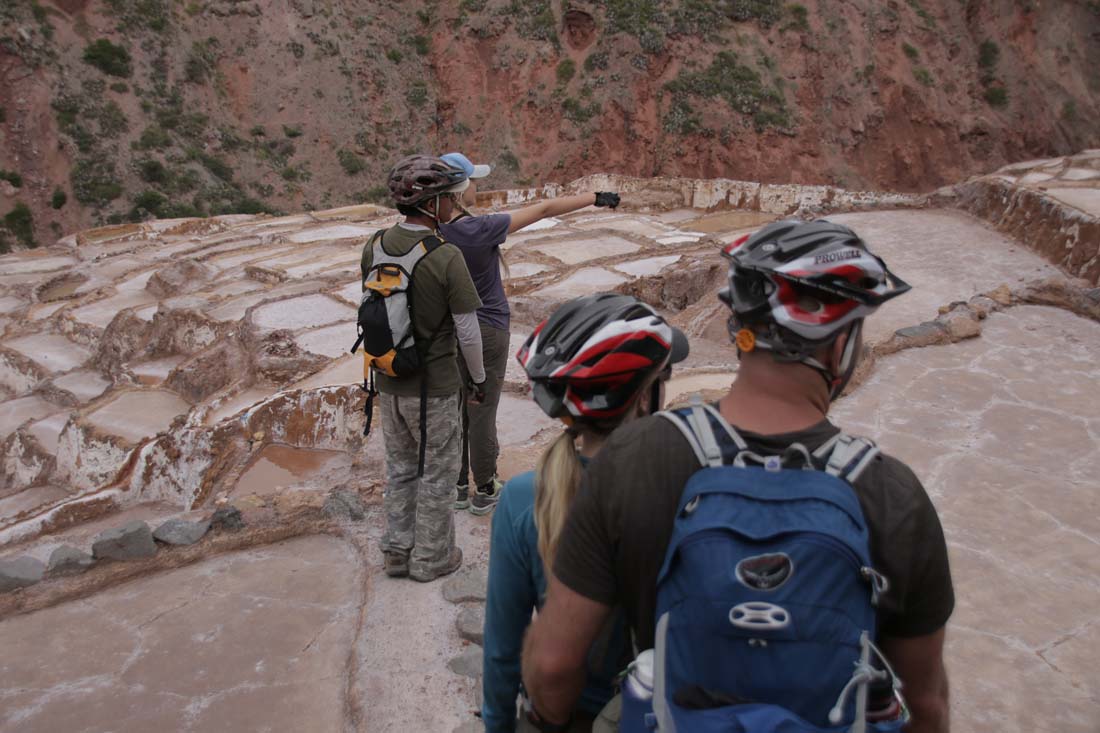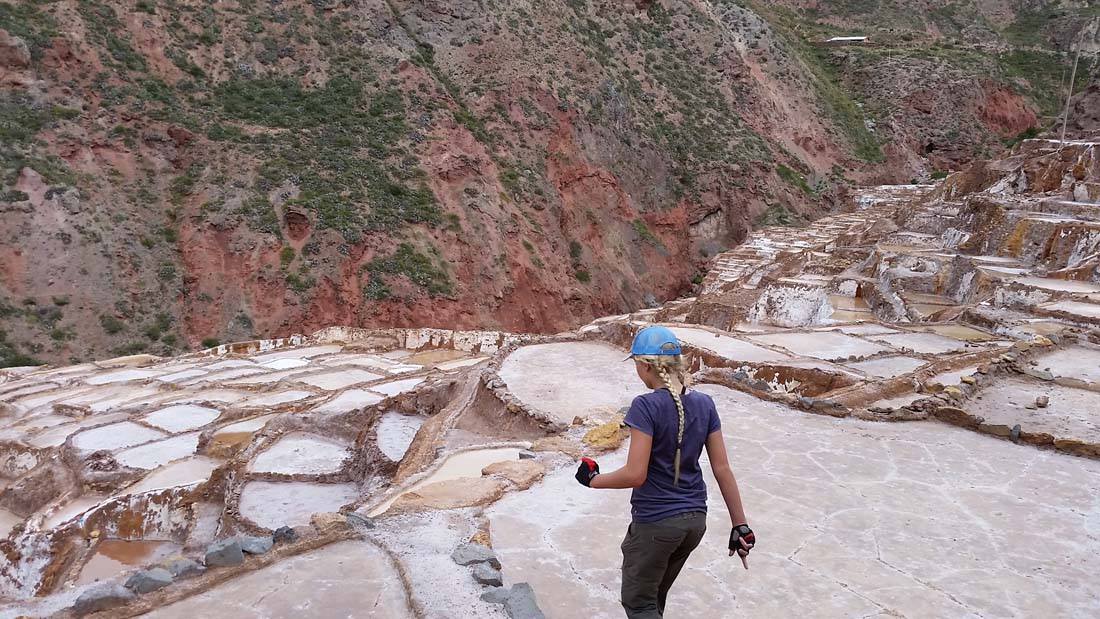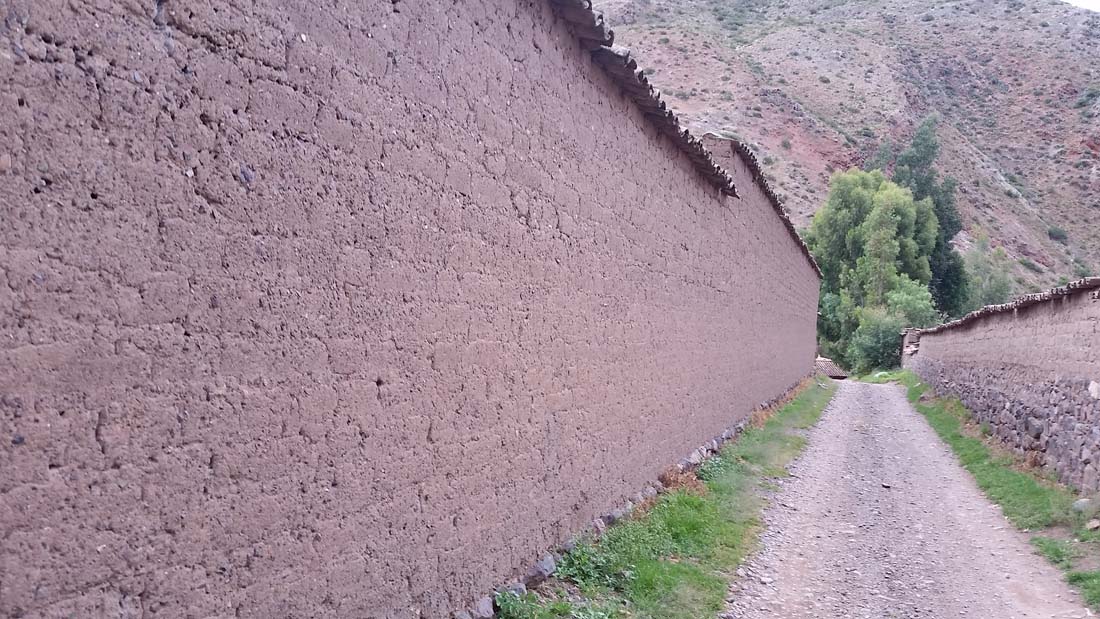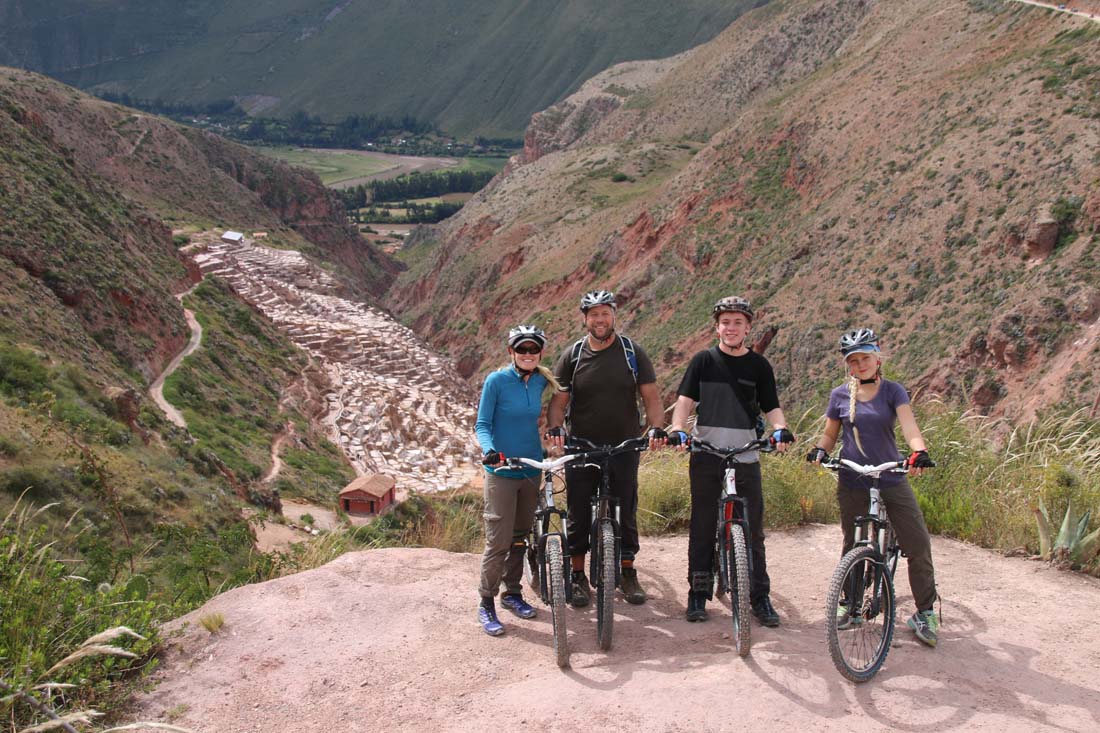 Adventuriety
Adventuriety
The plan for day four in Peru was a mountain bike adventure extravaganza! We started out early again for the ninety minute drive to the Valley of Urubamba where we would meet our guide, sign our lives away (technical mountain biking skills required!) and get our gear.
We met Luis, our guide and not the same person as Luis from Peru day one and day two, transferred into a different van, and drove back from whence we came, up out of the valley to our starting point in a village near the main road. Five minutes through the village and onto a dirt road, the above photo surrounded us in the clean morning air.
The day was perfect and we traveled the meandering hilly roads enjoying the peaceful scenery and the feeling that we were getting to see something off of the well worn tourist path.
The kids loved the freedom of the bikes.
Both of them are strong and mostly fearless riders.
Red dirt of the farmland.
We saw local people living their lives.
Quinoa, an ancient and still important crop in the Andes.
More stunning scenery
Luis stopped us here and we watched these people working in the field. He told us that the kids in this area walk an hour to school each morning after chores and then an hour home in the afternoon for more chores. He said that there is no running water or electricity in this rural area, but he went on to say that these communities are very tight knit and while they do not live a life that is familiar to us, they are happy and hard working people. The day is from sunrise to sunset and with the disappearance of the sun, people put down their work and the kids play and the adults drink corn beer, visit with each other and relax until bedtime.
We continued the ride up a steep and never-ending hill with some traffic to Moray, meaning “dried corn,” an Incan ruin that was probably the world’s first agricultural research center, a place that the Incas prepared different crops to thrive in the widely varying climates of their empire. Need to adjust those avocado trees to grow in high altitudes? Send them over to Moray for some time on the terraces. Another thing that we learned here is that the Inca always worked with the natural landscape, so this site was chosen for its shape, mountain and valley, and then the terraces were built to fit what already existed.
Like Pisac, floating stairs are used to connect the terraces. You are allowed to walk on this set and it a bit challenging to keep your balance.
These grasses were used to make all kinds of things. Grant tried his hand at weaving.
We saw many signs all through the Sacred Valley (and Ecuador) that were often a bit confusing due to a few letters. We couldn’t figure out what “Respect the Scans” meant and finally asked Luis. It’s a typo and is supposed to mean “Respect the Signs.” No problem.
Another example of sign typos…it makes me wonder how many signs in English speaking countries have translation typos for other languages.
Scott stopped to chat with the man and ask if he could take a picture of the donkeys. No problem. Then Scott asked if he could take a picture of the man with the donkeys. The man posed for one photograph and then said something in a lot of very rapid Spanish. It was basically the idea of reciprocity, which is ancient and still very much a part of the culture in the best of ways. “I do something for you (first) and now you do something for me.” And the attitude is all about happily working things out to mutual benefit, it’s not a “I’m only going to be nice if you are” thing. Ah, yes, a few Sols for the photo and everyone was happy.
The animals work just as hard as the people.
This section came after one of the “technical mountain biking” sections that I walked the majority of and in my slowness and caution I got stuck behind some donkeys that were wandering around without any people. The kids were far ahead with Luis and headed for lunch, but Scott waited to make sure I was still on the bike. I don’t think I have mentioned yet that I’m not a good biker and biking, like the via ferrata, was a challenge day for me. Surprisingly I was low anxiety, my adrenaline must have been depleted from the cable bridge the day before.
We cycled on to an abandoned “community center” looking building where we stopped for lunch. It was the first day that I was actually hungry and my stomach was growling. One of the benefits of elevation is a loss of appetite. Scott and I finished lunch and lounged on the warm concrete with this view.
The kids, meanwhile were entertained by a friendly mutt looking for a treat.
This woman was set up and weaving in front of the building where we stopped for lunch. We purchased one of her creations and were allowed a photo. She did not believe that the 100 Sols bill we tried to pay with was real (about 30 US Dollars) and called our guide over to discuss the situation. He convinced her that it was fine and she reluctantly took it. Luis told us that currency is an issue in Peru. There is a black market for currency and a lot of counterfeiting. I had read in a guidebook that torn bills will not be accepted and I had a few five dollar bills rejected for tiny tears at a restaurant. I asked Luis about how people (our guides for example) in Peru deal with US dollars they get with tears and he explained that is what the black market is for. For a small fee, the imperfect bills are exchanged for pristine currency and then taken across the border to other countries where wrinkles, tears and imperfections are not a problem, only in Peru is that an issue.
On the road again with full tummies.
We cycled through this neighborhood of Maras…
…known for its old doors, among other things…
…and into the main plaza of the town. We could hear a man selling fruit over a loud speaker. Luis explained that no fruit grows in this area so trucks come into town a couple of times a week and peddle fruit auctioneer style. Maras is a town built near salt evaporation pools. The people from this town have salt plots that they tend throughout the year. The salt is harvested and packaged all by the people of the community and sold for their profit. Salt to Maras community members is free. This statue in the middle of town depicts salt being carried by donkeys and Moray, the Inca ruin, which is nearby.
We begin the descent to the salt ponds.
The salt ponds are beautiful and have been used since pre-inca times. A subterranean stream brings salt to the surface where the water is carefully directed into the pools through irrigation channels, evaporated over time and through hard work, patience and careful tending of the salt plots, high quality salt ends up being sold all over the world.
We visited just as the rainy season was winding down and so the ponds were full of water. As the dry season evaporates the water in the plots, the whole area becomes white with salt.
We left our bikes on the road and hiked around the salt plots. Grant enjoyed taking pictures of the salt formations.
You can see the salt crystals are forming in this pool with a lot of water.
It is easy to imagine how white the whole area must be in the dry months when all of the water has evaporated and the salt is ready to harvest.
Ashley enjoyed leading us farther and farther into the maze of the salt plots.
Of course, we followed her. It was fun to walk on the little curbs of earth between the stones that created the framework of the salt pans. We saw one man working on his plot, carrying huge stones to build up the sides that would eventually retain the salty water. The pictures don’t so this place justice. There is a feeling here of ancient past that is continually being sewn together with the “present” over hundreds of years to craft a giant patchwork quilt of creation touched by so many hands and so many eras.
After the salt ponds we continued down an incredibly technical trail which the kids and I walked and Scott rode all of the way down and then crashed at the bottom. He had mostly recovered by the time we reached him and then we rode along dirt roads and through rural neighborhoods. This is one of the houses along the road.
We crossed a bridge as we headed back towards the town of Urubamba.
We enjoyed riding the back roads of town just as much as we had the rolling hills of the rural areas. It was so interesting to see where the community lived.
We rode about 30 kilometers and truly enjoyed the sights, sounds and the pure physical exertion of the day. We learned some new things about the past and present and the kids both improved their mountain biking skills (steep, technical, downhill) and Scott survived his. I managed to stay upright when I was on the bike and I learned how to ride down steps. This is second bike tour we have taken this year and these tours (good guide probably paramount) seem to be a great way to explore a place even for the “bike wary” like me. It was a great day.


